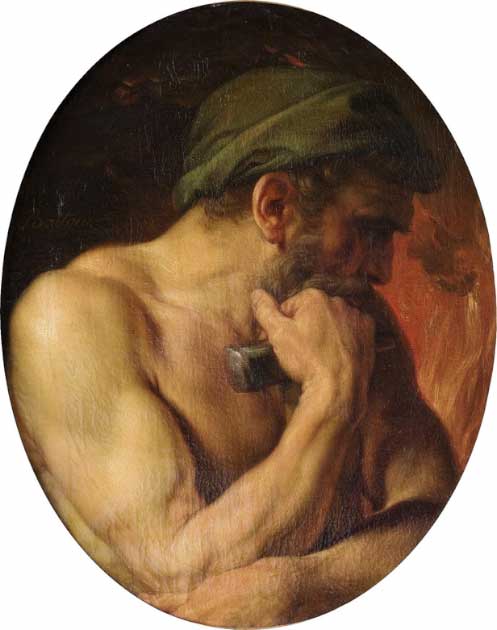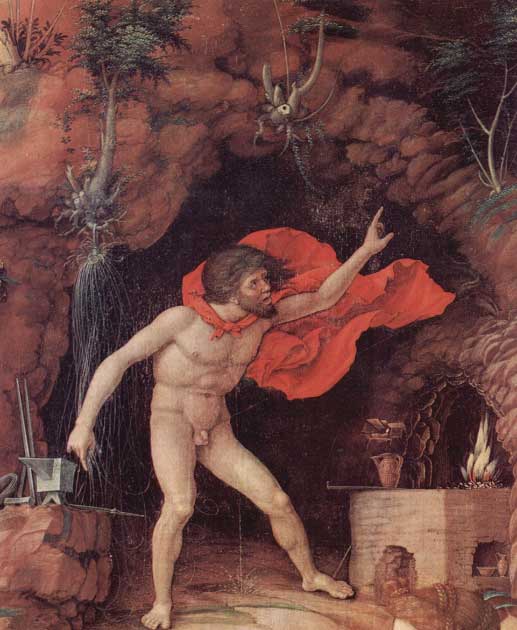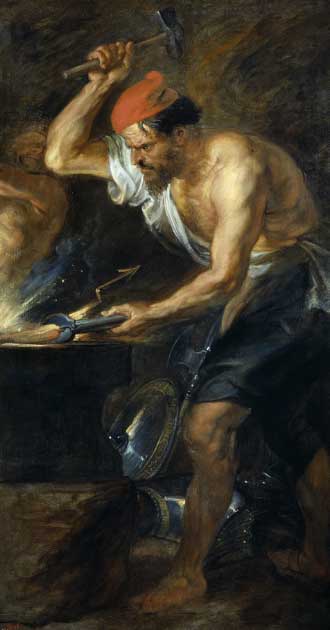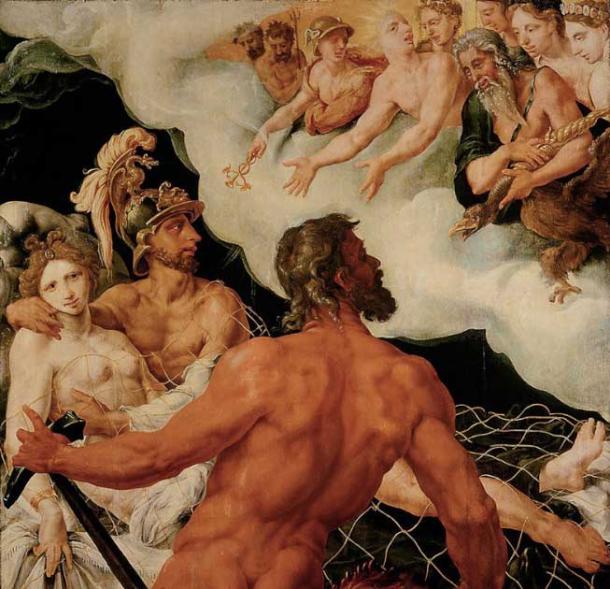
How Did Greek God Hephaestus Score the Goddess of Love?
As one of the twelve Olympians, the god Hephaestus was a major deity for the ancient Greeks. In Greek mythology, Hephaestus was primarily the god of fire and smiths, but he was also in charge of other crafts, including sculpting and carpentry. Married to the goddess Aphrodite and son of Zeus and Hera, the king and queen of Mount Olympus, the god Hephaestus appears in many of the famed legends of the ancient Greeks.

Depiction of the god Hephaestus (as Vulcan) by Pompeo Batoni. (Public domain)
Who was Hephaestus? The Anomaly of the Lame Olympian God
Some ancient writers, such as the poet Homer, claimed that the god Hephaestus was the son of Zeus and Hera. Others however, such as Hesiod, stated that Hera conceived the god on her own. In any case, Hephaestus is said to have been born very ugly, which is an anomaly as the other Greek deities were believed to be physically flawless.
Hephaestus was commonly depicted as a bearded middle-aged man with a large physique, usually described as wearing a short, sleeveless tunic, as this was the clothing of choice of craftsmen. As a craftsman himself, Hephaestus was associated with such tools of the trade as hammers, anvils, and tongs.
Hephaestus might have been born lame, as one of his many epithets was “the lame one.” In some myths, Hephaestus was said to have been made lame either by Zeus or Hera. In one such story, Hephaestus is said to have intervened on behalf of his mother during a quarrel between Zeus and Hera. Enraged by his interference, Zeus cast Hephaestus out of Mount Olympus and he became lame after the fall. In other accounts, it was Hera, disgusted by her son’s deformity and ugliness, who threw Hephaestus down from the mountain.

Detail of Hephaestus in his forge in the painting “Parnassus” (1496-1497) by Andrea Mantegna. (Public domain)
Hephaestus, God of Fire and Smiths, and his Return to Olympus
It was during his exile that Hephaestus learned his trade. In one version of the myth, Hephaestus fell in the ocean, where he was found by Thetis and Eurynome. The pair sheltered the Olympian in a cave under the ocean for nine years, where he learned to make jewelry using pearls and corals. In another version of the tale, Hephaestus landed on the island of Lemnos, where he was tutored by Kidalionas, a blacksmith. These tales explain why Hephaestus was the god of fire and smiths.
Eventually, Hephaestus returned to Mount Olympus, thanks to Dionysus. According to one myth, Hephaestus intended to exact revenge on Zeus and Hera for what they had done to him. The god crafted a golden throne, which he gave to his mother. Hera accepted the gift, and sat on it.
When the goddess tried to get up, however, she was unable to do so, as she was tied down by invisible cords. Hera begged her son to set her free, as did many of the other gods, but to no avail. Eventually, it was Dionysus who prevailed on Hephaestus by getting him drunk, and therefore succeeding in convincing him to set Hera free.

The ancient Greek god Hephaestus in “Vulcan forging the Thunderbolts of Jupiter” (1636-1638) by Peter Paul Rubens. (Public domain)
Bargaining for Love: Hephaestus and Aphrodite
As Hephaestus was about to set his mother free, Zeus appeared and tried to convince his son to release Hera. Realizing that his father was unaware that he was going to set Hera free, Hephaestus took advantage of the situation by making a bargain with Zeus. In exchange for Hera’s freedom, Hephaestus was to have the hand of Aphrodite in marriage. Thus, the lame and ugly Hephaestus became the husband of the goddess of love.
In one story, Aphrodite committed adultery with Ares, the god of war, and the pair were caught red-handed by Hephaestus and ensnared with a chain-net that he made himself. Hephaestus invited the other gods to laugh at the adulterous pair, and it was Poseidon who eventually persuaded him to release them.
- Five Female Olympians of Ancient Greece: The Good, the Bad and the Ugly
- Achilles’ Shield: What’s the Meaning of the Iliad’s Most Symbolic Object?

Hephaestus, as Vulcan, showing the captured Hera and Ares, or Venus and Mars, to the gods. (Public domain)
Hephaestus created many other magnificent objects, for himself and the gods, as well as for certain mortals. For example, his palace was made of gold, and he fashioned himself gold automata that behaved almost like humans. Moreover, several pieces of military equipment are said to have been made by Hephaestus for the heroes of Greek mythology. These include the armor of Achilles, the sword of Peleus, and the breast-plate of Diomedes.
Top image: Aphrodite in the forge of the god Hephaestus. 1610 painting by Bartholomeus Spranger entitled “Venus in Vulcan’s Forge.” Source: Public domain
By Wu Mingren
References
Atsma, A. J. 2017. “Hephaistos” in Theoi Greek Mythology. Available at: http://www.theoi.com/Olympios/Hephaistos.html
Geller. 22 March 2017. “Hephaestus” in mythology.net. Available at: https://mythology.net/greek/greek-gods/hephaestus/
No name. 2018. “Hephaestus – Greek God of Fire and Metalworking” in Greek Gods & Goddesses. Available at: https://greekgodsandgoddesses.net/gods/hephaestus/
No name. 2018. “Hephaestus: Greek God of Blacksmiths and Fire” in Greek Mythology. Available at: https://www.greekmythology.com/Olympians/Hephaestus/hephaestus.html
The Editors of Encyclopaedia Britannica. 2022. “Hephaestus” in Britannica. Available at: https://www.britannica.com/topic/Hephaestus
















Comments
glory to the Gods